
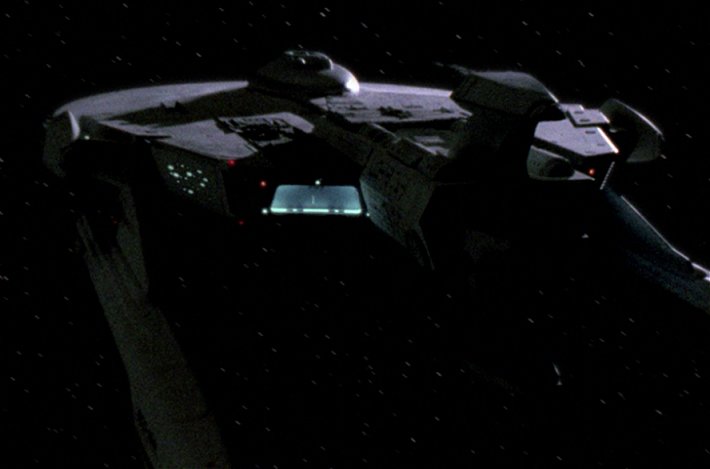
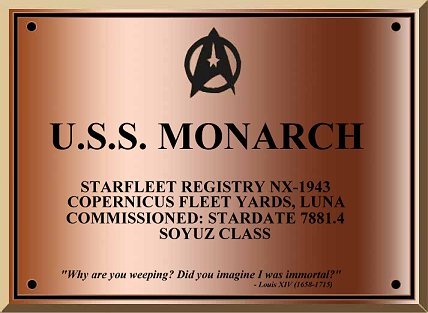 U.S.S. Monarch is the last Soyuz class variant of the successful Miranda class light cruiser. Monarch was the last of this sub-class to be decommissioned on stardate 8531.5 [Earth year 2288], having returned from a three year mission to Boronis IV under Captain Francis Hutchinson. The starship Monarch is operated by Starfleet Research and Development; she spends most of her time at Utopia Planitia spacedock in dock 17, the 'special' dock. N.X. 1943 had a classified history during her operational period with Starfleet; she was the last Soyuz class to be refit.
U.S.S. Monarch is the last Soyuz class variant of the successful Miranda class light cruiser. Monarch was the last of this sub-class to be decommissioned on stardate 8531.5 [Earth year 2288], having returned from a three year mission to Boronis IV under Captain Francis Hutchinson. The starship Monarch is operated by Starfleet Research and Development; she spends most of her time at Utopia Planitia spacedock in dock 17, the 'special' dock. N.X. 1943 had a classified history during her operational period with Starfleet; she was the last Soyuz class to be refit.
U.S.S. Monarch was in refit for a year following her decommissioning ceremony. NX 1943 was stripped down before being rebuilt, modular part by modular part. The Soyuz class configuration was retained for the larger aft section which could be used for engineering projects.
U.S.S. Monarch has subsequently been used to test various pieces of prototype equipment, new refined equipment and new concepts/theories. Monarch, although still technically warp capable, rarely leaves the Sol system, spending much of her research time either docked at Utopia Planitia or running at impulse speeds around the solar system. Some of the more recent studies carried out onboard include prototype replicator technology, phaser strip technology studies phase one, photon torpedo MK VII testing, advanced duotronic computer technology assessment and ideonomothetic laboratory technology testing for the next generation of starships.
The new Flight II Miranda class light cruisers and Apollo class frigates owe some of their developmental testing to U.S.S. Monarch.
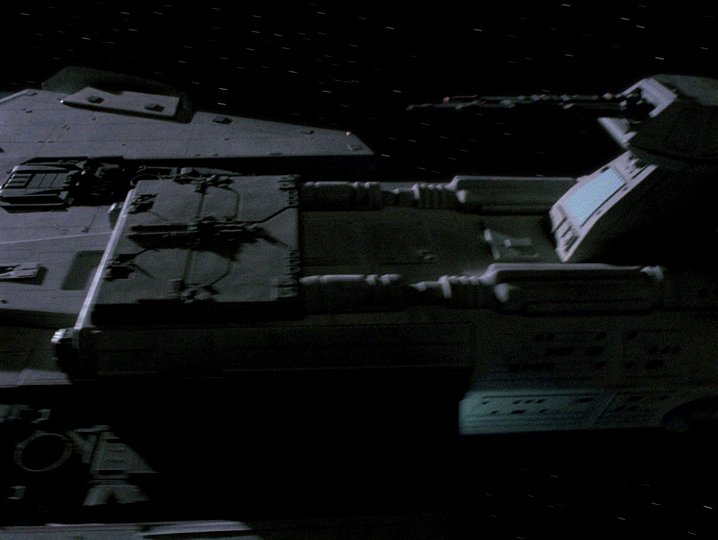 The Commanding officer for the Monarch [since 2297] was Captain Susan Thornton, who commands the crew of 180.
The Commanding officer for the Monarch [since 2297] was Captain Susan Thornton, who commands the crew of 180.
Soyuz class history:
Soyuz class vessels were the pioneering first variantof the Miranda class, launched in the 2260s. These vessels revolutionised the Klingon and Romulan cold wars, purpose-designed for the role of Communications Intelligence (CommInt); Electronic Intelligence (ELINT) and Signals Intelligence (SigInt). The Federation-Klingon war of 2256 had shown an urgent need to produce a frigate sized vessel capable of detecting these threats earlier. This reconnaisance frigate design was ordered in 2260 as pathfinder concept NXP2270 FH [heavy frigate] and the first Soyuz class variant was laid down in 2260, emerging hurriedly in 2263 as NX 1834, U.S.S. Soyuz.
Author's Notes: Soyuz class is clearly a Miranda class variant. With the Reliant registry clearly shown in TOS 'Court Martial', and the canon decommissioning date of 2288, this design needed to be from the Sixties. The retro-looking bridge module shows it to be from this time; clues of the original configuration of the Miranda class.
Various items of new technology were installed on the Soyuz class; new sensor arrays, installation of the new linear warp drive as per the refit Constitution class and prototype sensor arrays. The sensor arrays consisted of a mix of active long-range sensors and passive arrays for receiving weak transmissions from other nations and boosting them. Starfleet sourced these arrays from Massive Dynamic and Bold Futura, putting pressure on these corporations to keep their project deliveries on-time. Massive Dynamic worked on their Oracle sensor system from their earlier Eagle Eye system from earlier Starfleet Scouts. The delivery date was put back on more than one occasion, risking the contract being re-assigned before the Organian crisis brought the project back on-schedule. The passive Snoopy listening system came from Bold Futura’s Vulcan technologies centre on P’jem. The system had technical issues which were finally resolved on the fly by technicians assigned to the Soyuz trials in 2263.
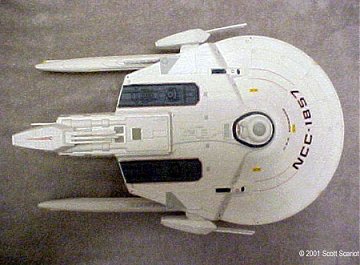 As part of the Soyuz design, the aft section of the hanger and engineering decks were extended. This new section contained the impulse and engineering sections as well as an additional third hanger. The contents of this hanger have been kept secret; it is believed to be probes and drones for further intelligence-gathering work. The new sensor arrays were mounted on turrets on this extended aft section. Trials showed that the new lengthening reduced the agility of the ship and early trials showed structural issues that had to be resolved. The Soyuz was tested extensively from its launch in 2263, being joined in 2264 by U.S.S. Edinburgh [NCC 1857], 2265 by U.S.S. Aegis [NCC 1892], 2267 saw U.S.S. Bozeman [NCC 1941] joining the fleet and finally 2269 saw U.S.S. Monarch [NCC 1943] launched from Copernicus Fleet Yards.
As part of the Soyuz design, the aft section of the hanger and engineering decks were extended. This new section contained the impulse and engineering sections as well as an additional third hanger. The contents of this hanger have been kept secret; it is believed to be probes and drones for further intelligence-gathering work. The new sensor arrays were mounted on turrets on this extended aft section. Trials showed that the new lengthening reduced the agility of the ship and early trials showed structural issues that had to be resolved. The Soyuz was tested extensively from its launch in 2263, being joined in 2264 by U.S.S. Edinburgh [NCC 1857], 2265 by U.S.S. Aegis [NCC 1892], 2267 saw U.S.S. Bozeman [NCC 1941] joining the fleet and finally 2269 saw U.S.S. Monarch [NCC 1943] launched from Copernicus Fleet Yards.
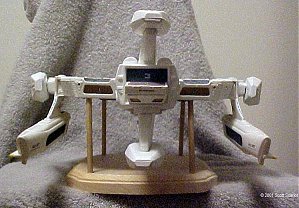 Testing with NX 1834 Soyuz took place along the Neptune testing range before trials closer to the Klingon Neutral Zone. The hope was that the Soyuz could use her active sensors to detect a cloaked Klingon D-7 Klolode class or other warship. In the event the passive Snoopy system showed it to be able to detect transmissions from across the sector, the active array required extra technical assistance before it was realised the range was more than expected. Using the active array to detect cloaked ships was like trying to cross a road using a telescope: too long range to find a short range target and the Soyuz was not agile enough to compensate.
Testing with NX 1834 Soyuz took place along the Neptune testing range before trials closer to the Klingon Neutral Zone. The hope was that the Soyuz could use her active sensors to detect a cloaked Klingon D-7 Klolode class or other warship. In the event the passive Snoopy system showed it to be able to detect transmissions from across the sector, the active array required extra technical assistance before it was realised the range was more than expected. Using the active array to detect cloaked ships was like trying to cross a road using a telescope: too long range to find a short range target and the Soyuz was not agile enough to compensate.
With the dedicated intelligence-gathering role, the crew compliment of a Soyuz class was less than that of a Miranda class (some 180 versus 220 on the Miranda). As a result of less science laboratories required, extra data-processing rooms and cargo bays were added to the design. With the deployment of the design, Starfleet Intelligence felt that the light cruiser-sized heavy frigate was too large a design for the role. With the sensor technology advancements from Project Excelsior and Oberth class super scout, the scene was set for the introduction of a scout-sized vessel capable of performing the role of Soyuz. Work had already commenced on the deigning of the Scimitar class destroyer in the mid-2280s and as a variation of the design it was decided to fit a sensor array on the ventral end of the warp nacelle assembly; this formed the basis for the Kestrel class superscout.
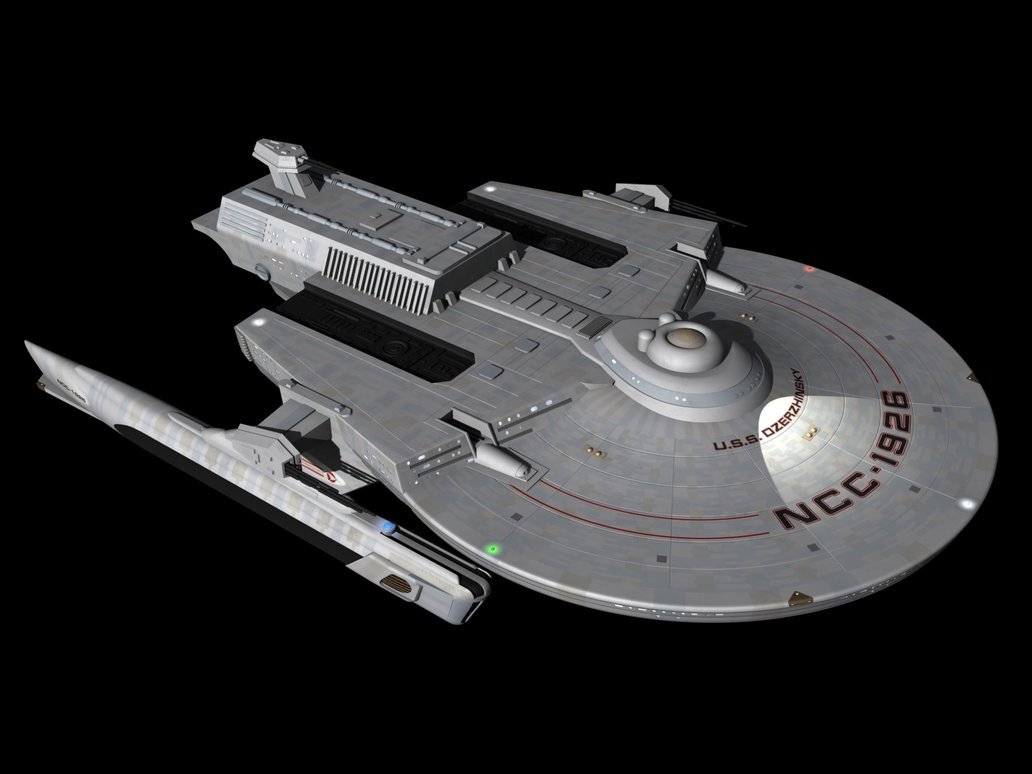 By 2288 it was decided to withdraw the Soyuz class from service as the replacement Kestrel class NX-3000 variant of the Scimitar class came online and the Cyane class Miranda class variant would take over the roles requiring a larger ship. Fleet Admiral Morrow, Starfleet Commander, ordered the decommissioning of the remainder of the Soyuz class fleet by the mid-2290s. U.S.S. Soyuz was retired to the Fleet Museum whilst most of the remaining vessels were retained by the ASDB. U.S.S. Aegis, by quirk of name, was selected for testing defensive technologies and strategies, Edinburgh was used for testing sensor arrays before retirement and Monarch was selected for more general testing.
By 2288 it was decided to withdraw the Soyuz class from service as the replacement Kestrel class NX-3000 variant of the Scimitar class came online and the Cyane class Miranda class variant would take over the roles requiring a larger ship. Fleet Admiral Morrow, Starfleet Commander, ordered the decommissioning of the remainder of the Soyuz class fleet by the mid-2290s. U.S.S. Soyuz was retired to the Fleet Museum whilst most of the remaining vessels were retained by the ASDB. U.S.S. Aegis, by quirk of name, was selected for testing defensive technologies and strategies, Edinburgh was used for testing sensor arrays before retirement and Monarch was selected for more general testing.
*****
U.S.S. Monarch - or the 'Monolith' as her crew affectionately calls her - was one of two Soyuz class starships reconfigured after the fleet rundown was completed in 2293 following the Khitomer Accords being signed. The two starships: Monarch and Aegis were selected for testing new equipment. U.S.S Aegis [NX 1942] met her fate in 2289 when she was aptly used to test new shield technologies to destruction at the hands of the U.S.S. Lexington [NCC 1709]. Monarch was selected for rebuild as stated above and would allow a rare opportunity to have a constantly dynamic platform for studying and testing new internal arrangements and new technologies. Should she have any internal giveaways for classified projects when her days are finished, it is most likely, as with the Aegis, she will be used as target practice.
As part of the Starfleet Review, a medium sized technology demonstrator for the ASDB was proposed in order to advance starship design forward into the twenty-fourth century. With the first draft released of the Review, in 2303 the starship was selected for the role: U.S.S. Monarch. The Monarch was dry-docked at Utopia Planitia yard number 17, the 'special' dock. Extensive work was planned for this non-standard starship. The entire crew was re-assigned and the majority of the research and development work conducted by the Monarch was moved to other starships, including the Sheffield.
Eighteen months of redesign work was planned, involving the gutting of the starship, but retention of the enlarged engineering section in order to test warp cores for larger ships than Miranda class. Thus U.S.S. Monarch retains her unique status as Soyuz class, but without the sensor pods that made her visually distinguishable from Miranda class. She now resembles the rollbarless U.S.S. Lantree, but with an extended and enlarged aft section.
The Monarch was ready in her new configuration on stardate 11904.5. Captain Philip Truman assumed command with Commander Saran as his Executive Officer.
Author's Notes:
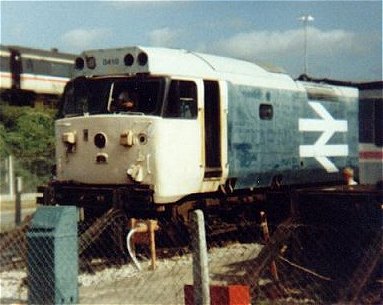
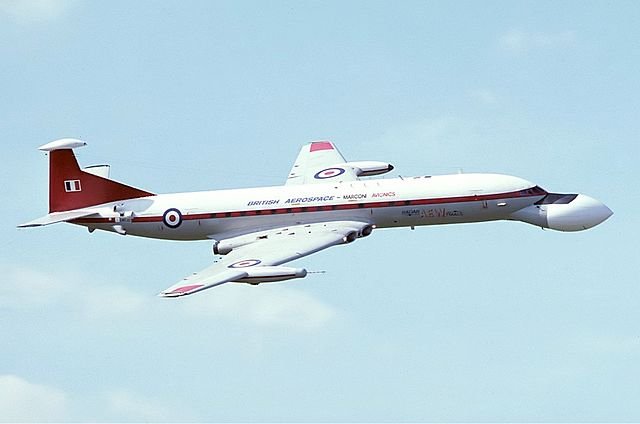 Why have a Soyuz class starship as a research prototype? Well, simply because in the history of planes, trains and warships it has been historically easier to keep 'tweaking' an obsolete version of a form of transport, improving it and testing radical new systems in them than by using current frontline examples [causing them to spend time in hangers or depots, wasting away their useful operational lives - U.S.S. Excelsior was an exception to this as the Transwarp Drive required a larger vessel and it was the actual starship class being tested]. Secondly if the starship in question is obsolete then you can strip it down to the bare frames and start again as often as you need - you can also test it to destruction if necessary.
Why have a Soyuz class starship as a research prototype? Well, simply because in the history of planes, trains and warships it has been historically easier to keep 'tweaking' an obsolete version of a form of transport, improving it and testing radical new systems in them than by using current frontline examples [causing them to spend time in hangers or depots, wasting away their useful operational lives - U.S.S. Excelsior was an exception to this as the Transwarp Drive required a larger vessel and it was the actual starship class being tested]. Secondly if the starship in question is obsolete then you can strip it down to the bare frames and start again as often as you need - you can also test it to destruction if necessary.
Weren't all Soyuz class starships established to have been decommissioned in 2288? Yes. Monarch is the last of the class to have been decommissioned, probably the example in the best condition that hadn't been converted to Miranda class specifications. Once Monarch was transferred to the Research and Development department she is off the Starfleet list technically and gains an NX registry number and an entry under research vessels.
The Soyuz design as an intelligence-gathering variant of the Miranda class came from conversations with Andrew Brown. The real-world inspirations include the Bae Nimrod AEW3, the troubled design of the 1970s and 80s. I needed a reason for a design to last barely 18 years, having Soyuz replaced by Kestrel and Phantom made the story sensible.
Attached are images of a previous vehicle, the real version that inspired this ship, called 'Monarch'. Recently I discovered movie footage taken by someone at the Laira Open Day September 1992 who had inadvertently filmed my late Father, my brother and me. This brought back memories of a great day with the three of us together and the last time I saw the Class 50 diesels in such numbers.
Other technology demonstrators I have seen include the APT-E train, the original 150 001 and 002 ‘Sprinter’ trains and their rival Metro-Cammell design 151 001 and 151 002, 154 001 (ex 150 002) the Super Sprinter train technology demonstrator, the trimaran frigate prototype Triton, Jaguar ACT, English Electric P1A (forerunner to the Lightning) and the Gloster E28/39.
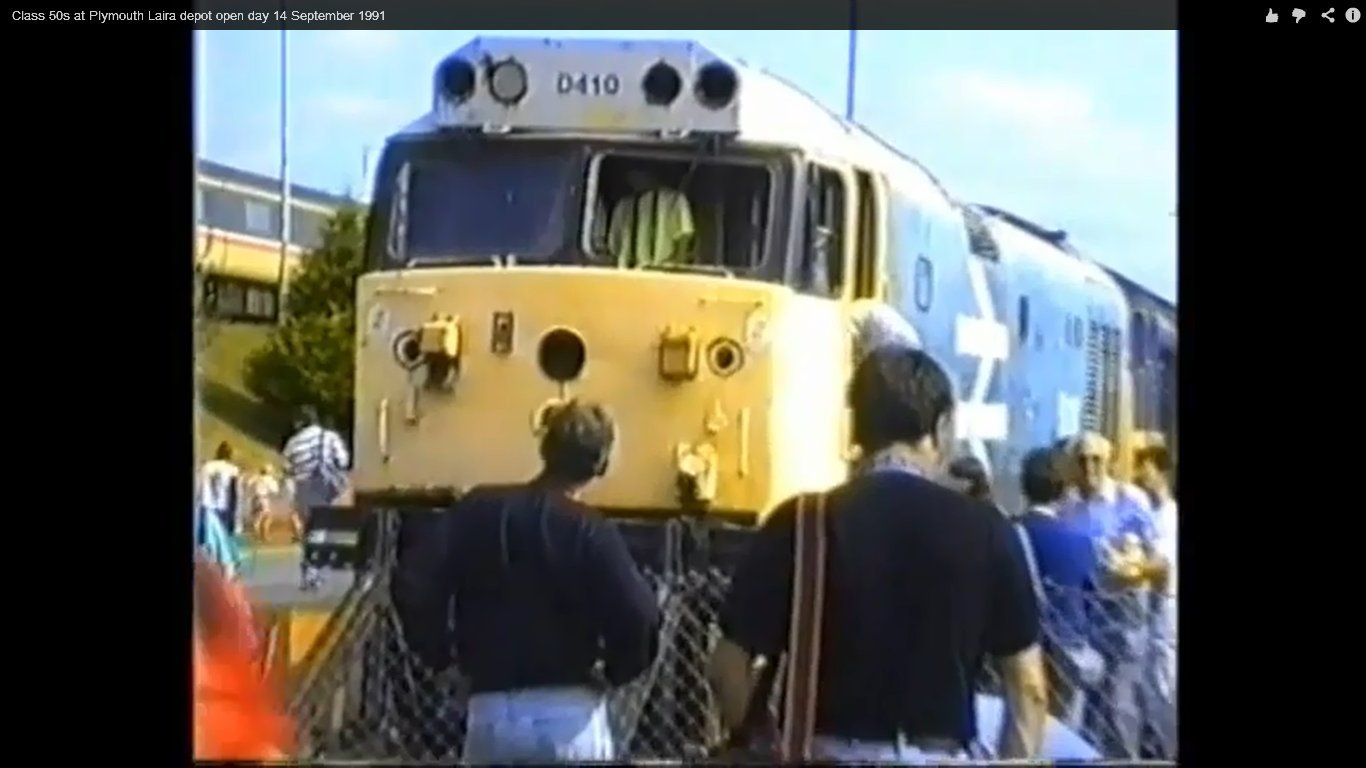
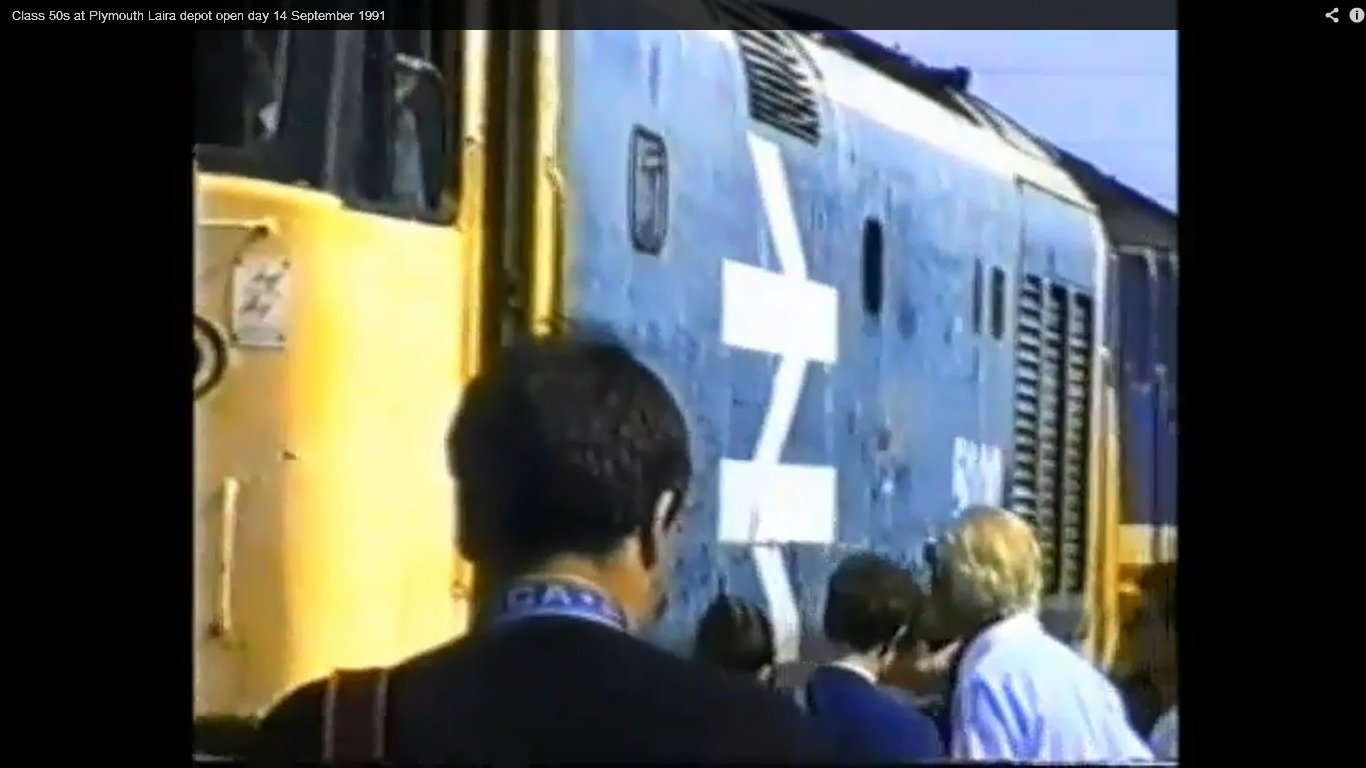












 U.S.S. Monarch is the last Soyuz class variant of the successful Miranda class light cruiser. Monarch was the last of this sub-class to be decommissioned on stardate 8531.5 [Earth year 2288], having returned from a three year mission to Boronis IV under Captain Francis Hutchinson. The starship Monarch is operated by Starfleet Research and Development; she spends most of her time at Utopia Planitia spacedock in dock 17, the 'special' dock. N.X. 1943 had a classified history during her operational period with Starfleet; she was the last Soyuz class to be refit.
U.S.S. Monarch is the last Soyuz class variant of the successful Miranda class light cruiser. Monarch was the last of this sub-class to be decommissioned on stardate 8531.5 [Earth year 2288], having returned from a three year mission to Boronis IV under Captain Francis Hutchinson. The starship Monarch is operated by Starfleet Research and Development; she spends most of her time at Utopia Planitia spacedock in dock 17, the 'special' dock. N.X. 1943 had a classified history during her operational period with Starfleet; she was the last Soyuz class to be refit.  The Commanding officer for the Monarch [since 2297] was Captain Susan Thornton, who commands the crew of 180.
The Commanding officer for the Monarch [since 2297] was Captain Susan Thornton, who commands the crew of 180. As part of the Soyuz design, the aft section of the hanger and engineering decks were extended. This new section contained the impulse and engineering sections as well as an additional third hanger. The contents of this hanger have been kept secret; it is believed to be probes and drones for further intelligence-gathering work. The new sensor arrays were mounted on turrets on this extended aft section. Trials showed that the new lengthening reduced the agility of the ship and early trials showed structural issues that had to be resolved. The Soyuz was tested extensively from its launch in 2263, being joined in 2264 by U.S.S. Edinburgh [NCC 1857], 2265 by U.S.S. Aegis [NCC 1892], 2267 saw U.S.S. Bozeman [NCC 1941] joining the fleet and finally 2269 saw U.S.S. Monarch [NCC 1943] launched from Copernicus Fleet Yards.
As part of the Soyuz design, the aft section of the hanger and engineering decks were extended. This new section contained the impulse and engineering sections as well as an additional third hanger. The contents of this hanger have been kept secret; it is believed to be probes and drones for further intelligence-gathering work. The new sensor arrays were mounted on turrets on this extended aft section. Trials showed that the new lengthening reduced the agility of the ship and early trials showed structural issues that had to be resolved. The Soyuz was tested extensively from its launch in 2263, being joined in 2264 by U.S.S. Edinburgh [NCC 1857], 2265 by U.S.S. Aegis [NCC 1892], 2267 saw U.S.S. Bozeman [NCC 1941] joining the fleet and finally 2269 saw U.S.S. Monarch [NCC 1943] launched from Copernicus Fleet Yards. Testing with NX 1834 Soyuz took place along the Neptune testing range before trials closer to the Klingon Neutral Zone. The hope was that the Soyuz could use her active sensors to detect a cloaked Klingon D-7 Klolode class or other warship. In the event the passive Snoopy system showed it to be able to detect transmissions from across the sector, the active array required extra technical assistance before it was realised the range was more than expected. Using the active array to detect cloaked ships was like trying to cross a road using a telescope: too long range to find a short range target and the Soyuz was not agile enough to compensate.
Testing with NX 1834 Soyuz took place along the Neptune testing range before trials closer to the Klingon Neutral Zone. The hope was that the Soyuz could use her active sensors to detect a cloaked Klingon D-7 Klolode class or other warship. In the event the passive Snoopy system showed it to be able to detect transmissions from across the sector, the active array required extra technical assistance before it was realised the range was more than expected. Using the active array to detect cloaked ships was like trying to cross a road using a telescope: too long range to find a short range target and the Soyuz was not agile enough to compensate.  By 2288 it was decided to withdraw the Soyuz class from service as the replacement Kestrel class NX-3000 variant of the Scimitar class came online and the Cyane class Miranda class variant would take over the roles requiring a larger ship. Fleet Admiral Morrow, Starfleet Commander, ordered the decommissioning of the remainder of the Soyuz class fleet by the mid-2290s. U.S.S. Soyuz was retired to the Fleet Museum whilst most of the remaining vessels were retained by the ASDB. U.S.S. Aegis, by quirk of name, was selected for testing defensive technologies and strategies, Edinburgh was used for testing sensor arrays before retirement and Monarch was selected for more general testing.
By 2288 it was decided to withdraw the Soyuz class from service as the replacement Kestrel class NX-3000 variant of the Scimitar class came online and the Cyane class Miranda class variant would take over the roles requiring a larger ship. Fleet Admiral Morrow, Starfleet Commander, ordered the decommissioning of the remainder of the Soyuz class fleet by the mid-2290s. U.S.S. Soyuz was retired to the Fleet Museum whilst most of the remaining vessels were retained by the ASDB. U.S.S. Aegis, by quirk of name, was selected for testing defensive technologies and strategies, Edinburgh was used for testing sensor arrays before retirement and Monarch was selected for more general testing.
 Why have a Soyuz class starship as a research prototype? Well, simply because in the history of planes, trains and warships it has been historically easier to keep 'tweaking' an obsolete version of a form of transport, improving it and testing radical new systems in them than by using current frontline examples [causing them to spend time in hangers or depots, wasting away their useful operational lives - U.S.S. Excelsior was an exception to this as the Transwarp Drive required a larger vessel and it was the actual starship class being tested]. Secondly if the starship in question is obsolete then you can strip it down to the bare frames and start again as often as you need - you can also test it to destruction if necessary.
Why have a Soyuz class starship as a research prototype? Well, simply because in the history of planes, trains and warships it has been historically easier to keep 'tweaking' an obsolete version of a form of transport, improving it and testing radical new systems in them than by using current frontline examples [causing them to spend time in hangers or depots, wasting away their useful operational lives - U.S.S. Excelsior was an exception to this as the Transwarp Drive required a larger vessel and it was the actual starship class being tested]. Secondly if the starship in question is obsolete then you can strip it down to the bare frames and start again as often as you need - you can also test it to destruction if necessary. 









